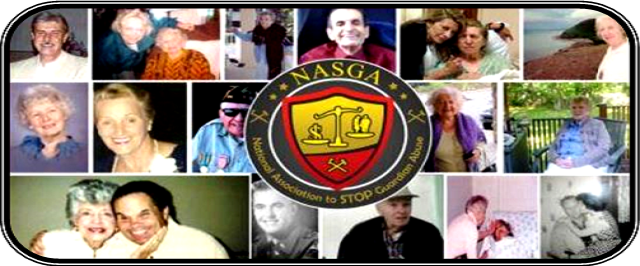That is especially true for one-third of the poor people who enter New York nursing homes – those whose bills are paid from Day One by Medicaid.
Across the state, these nearly 22,000 people were twice as likely to be admitted to one-star than five-star homes, The Buffalo News determined from state Department of Health data from 2017. In Western New York, they were four times more likely to be admitted to one-star homes.
The situation is better for poor people who started out with their nursing home bills paid for by Medicare, the federal program that provides health care for those over 65. Statewide, they were slightly more likely to wind up in top-rated nursing homes than in the worst.
Why would five-star nursing homes admit one group of poor people at a greater rate than the other?
Advocates and relatives contend it comes down to money. Medicaid pays nursing homes the lowest reimbursement, an average of $216 a day in Erie and Niagara counties. Medicare pays nursing homes more than double that, about $475 a day on average, according to estimates from Buffalo-area nursing home operators.
State and federal regulations prohibit nursing homes from discriminating against individuals because of their payment source, and executives at top-rated nursing homes said they do not.
Some operators of five-star nursing homes in Western New York said their Medicaid admission rates are low because most of their residents are seniors admitted for short stays to get rehabilitative services, which is usually covered by Medicare whether a resident is poor or not. None of the top-rated nursing homes that said their business model focuses on short-term rehab patients would provide statistics on their short-term and long-term admissions. The state said it does not keep that information.
Nursing homes, the executives said, look at many factors when considering admissions, including the level of care needed.
Becky DelPrince is an Erie County Medical Center vice president who oversees the hospital’s patient discharge planners. She acknowledged in an interview last December that it is difficult to place poor patients into the best nursing homes.
When asked why, DelPrince said: “They don’t give us a reason. They just don’t offer the patient a bed.”
When Medicaid pays
Across New York, top-rated five-star nursing homes actually admit more poor people on Medicaid than one-star nursing homes – a reflection of the fact that there are twice as many five-star homes as there are one-stars.
But the raw admission numbers don't tell the whole story.
At the five-star nursing homes, 7 percent of the new residents in 2017 were Medicaid admissions – poor people whose bills were paid by Medicaid from Day One.
At the one-star nursing homes, 15 percent of the new residents were Medicaid admissions.
Executives at some of Western New York's top nursing homes said the data the state Department of Health provided to The News does not accurately reflect the poor people in their facilities.
About two-thirds of the people eligible for Medicaid admitted to nursing homes, about 36,000 individuals, were also enrolled in the Medicare program. In those cases, Medicare usually pays the nursing home bills for up to 100 days.
Those dual-enrolled individuals are not listed as Medicaid admissions even though they are poor and Medicaid-eligible, the executives said.
That's true, said Jeffrey Hammond, a spokesman for the Health Department.
But when all Medicaid-eligible people are counted – including those whose bills are initially paid by Medicare – the poor were still admitted at greater rates at one-star than five-star homes, by a small margin, according to state data. At one-star homes, 32 percent of admissions were Medicaid-eligible, compared with 27 percent at top-rated homes.
Medicaid bed ‘unavailable’
Kathleen Cattrall says that in 2012 she was told her mother would have to leave Our Lady of Peace Nursing Care Residence in Lewiston when her mother’s payment source switched from Medicare to Medicaid, which pays a lower reimbursement.
 |
| Kathleen
Cattrall and her mother, Janis, at Niagara Rehabilitation and Nursing Center in Niagara Falls. Janis Cattrall died in the one-star nursing home in 2015. (Photo courtesy of Kathleen Cattrall) |
"I visited higher-ranked nursing homes pleading with administrators to find a room for mom," Cattrall said.
The only facility that would admit Janis Cattrall was the one-star Niagara Rehabilitation and Nursing Center in Niagara Falls.
Janis Cattrall, 90, who suffered from severe arthritis and dementia, died there in 2015.
Her daughter says she now knows it is against the law for nursing homes to discriminate against Medicaid recipients.
“At the time, I didn’t know Our Lady of Peace could not kick mom out. I am shocked and I am angry that mom, first of all, had to relocate, and secondly, that she wasn’t given an equal opportunity to stay at a higher-rated nursing home,” Cattrall said.
A spokesperson for Our Lady of Peace, which is owned by Ascension Health Senior Care, declined to comment on Janis Cattrall's circumstances but said the home is committed to assisting the poor.
"As part of that mission, we continually welcome new admissions who are Medicaid and Medicaid-pending," said Molly Gaus. "Today, Our Lady of Peace currently serves 250 residents and 66 percent of those are Medicaid beneficiaries and we welcome new Medicaid admissions frequently."
In 2017, Medicaid admissions accounted for 4 percent of Our Lady of Peace's new residents.
Do the best nursing homes discriminate against poor people on Medicaid?
Full Article & Source:
New York's top nursing homes less likely to admit poor


No comments:
Post a Comment